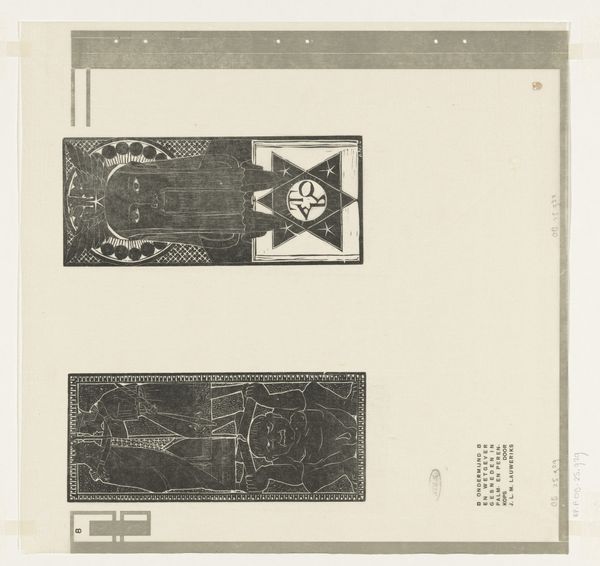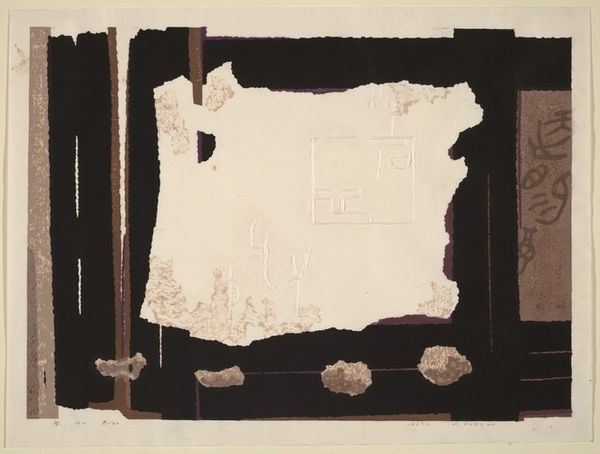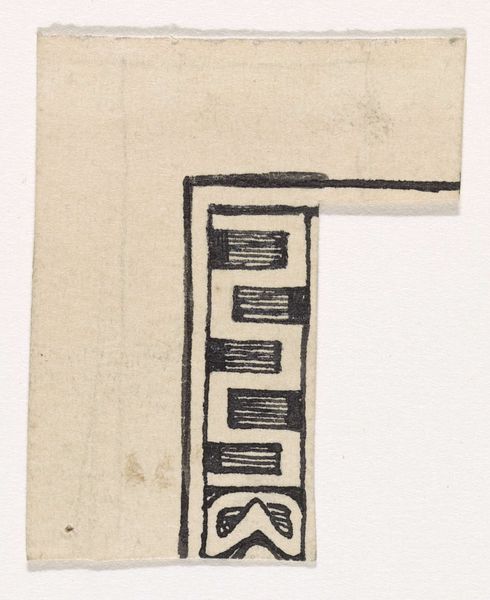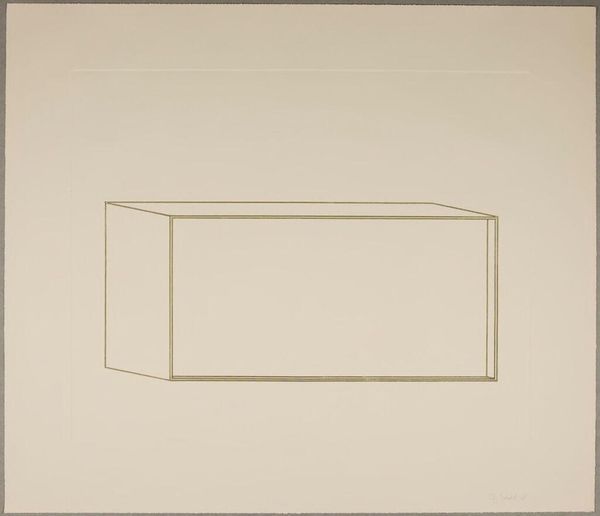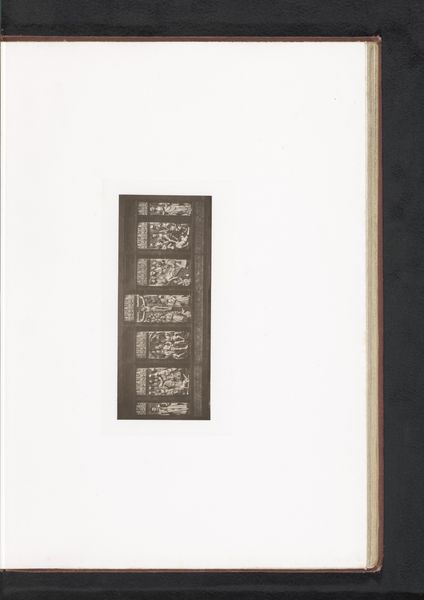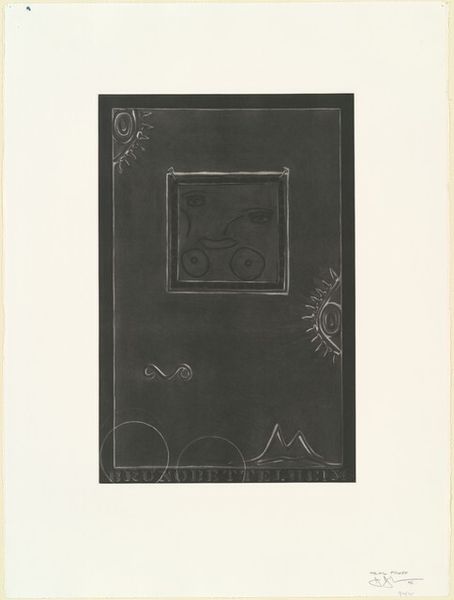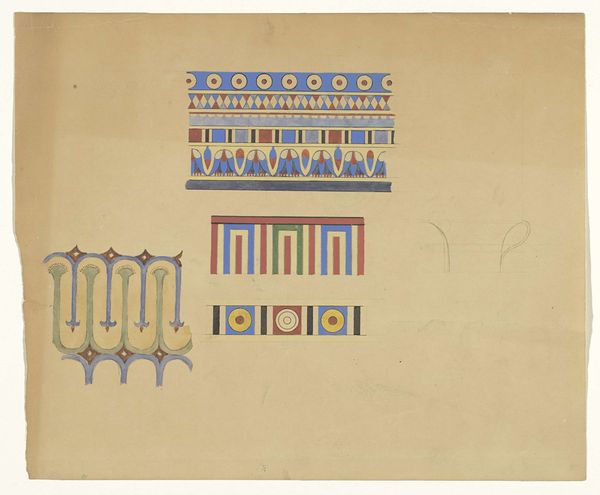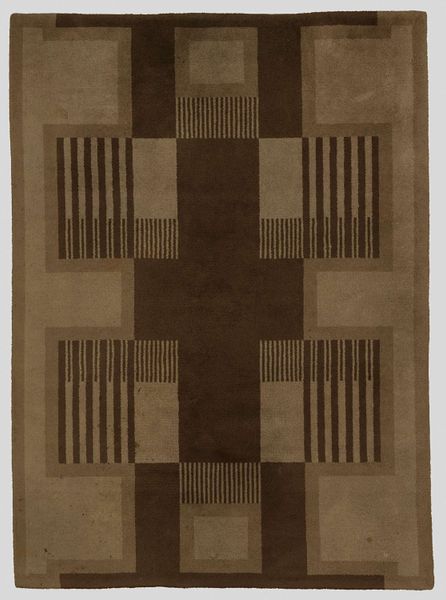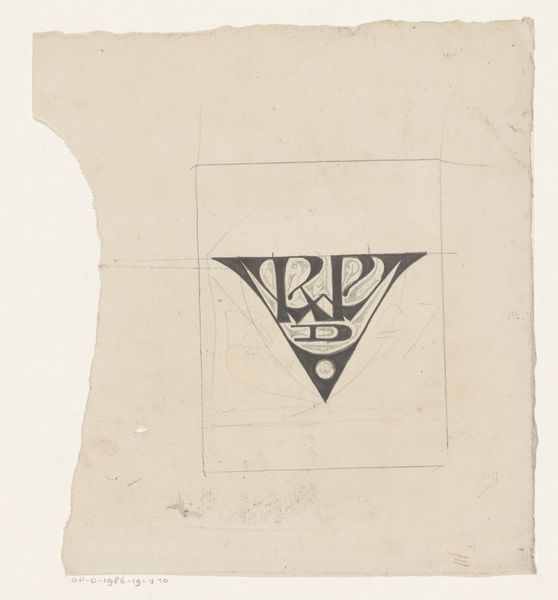
graphic-art, print, poster
#
graphic-art
#
toned paper
#
art-nouveau
# print
#
decorative-art
#
poster
Dimensions: height 255 mm, width 661 mm, width 333 mm, thickness 25 mm
Copyright: Rijks Museum: Open Domain
Curator: This album, known as the "Topografisch album van Nederlandse dorpen en steden 1905", was made around 1905 to 1907 and showcases graphic and decorative art styles including art nouveau through print and posters. It offers a fascinating glimpse into early 20th century Dutch culture. Editor: It's intriguing how the clean lines and geometrical silver patterns create such a solid, functional design; its form suggests utility and contents preservation, perhaps at the expense of emotive impact? Curator: That's an interesting tension, right? I mean, what kind of stories could this album hold about labor and craft, or who would be able to own and utilize it at the time? It also makes me think about how representations of place impacted national identity formation. Editor: Good point about nation building. The book binding, likely a low-cost mechanized form given the uniformity, served a function of access and documentation and contrasts starkly against a more decorated design. What impact would access have upon those pictured within? Curator: Precisely. Imagine the gaze involved in documenting these villages and cities! And given its likely purpose to promote images for tourism, how does the selection of places in the album reflect existing power structures within Dutch society and beyond? Were colonial projects advertised similarly in tandem? Editor: And thinking of the sheer quantity, how does the process of printing at scale affect artistic valuation? If the production shifts to functionality over finesse does this decrease social perception and thus social value? Is it viewed differently by differing tiers of production labour? Curator: Exactly! Examining those printing processes opens a conversation about what’s lost and gained as folk artistry moves to more mechanical modes, but looking at these images, at that specific moment of transition, gives a better lens to reflect and perhaps resist current inequities of design, manufacture, and consumption. Editor: The contrast definitely allows for contemplation between societal change and enduring imagery within a community or region and ultimately how one feeds into the other in a way that isn't typically appreciated without analysis like this.
Comments
No comments
Be the first to comment and join the conversation on the ultimate creative platform.
